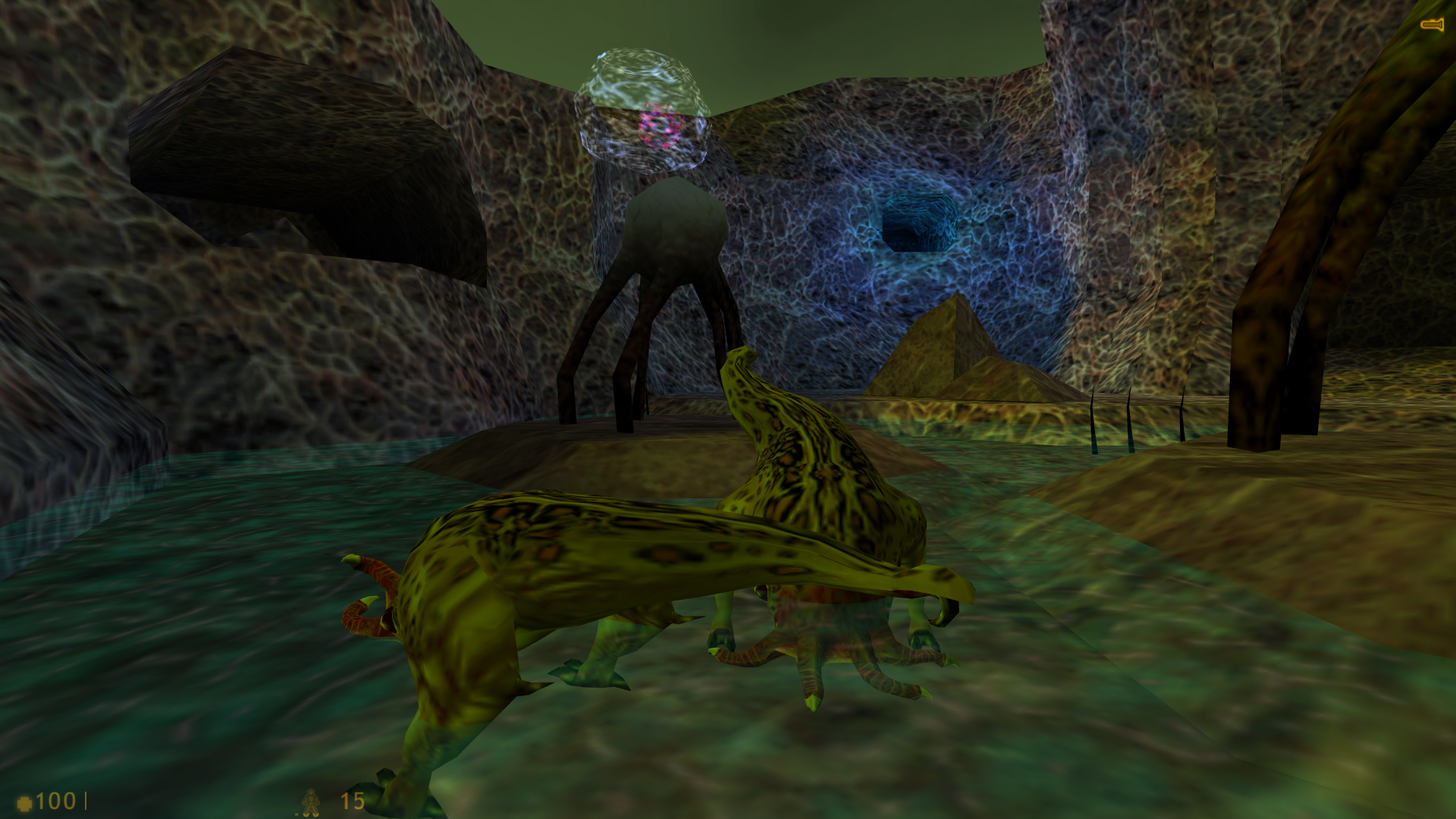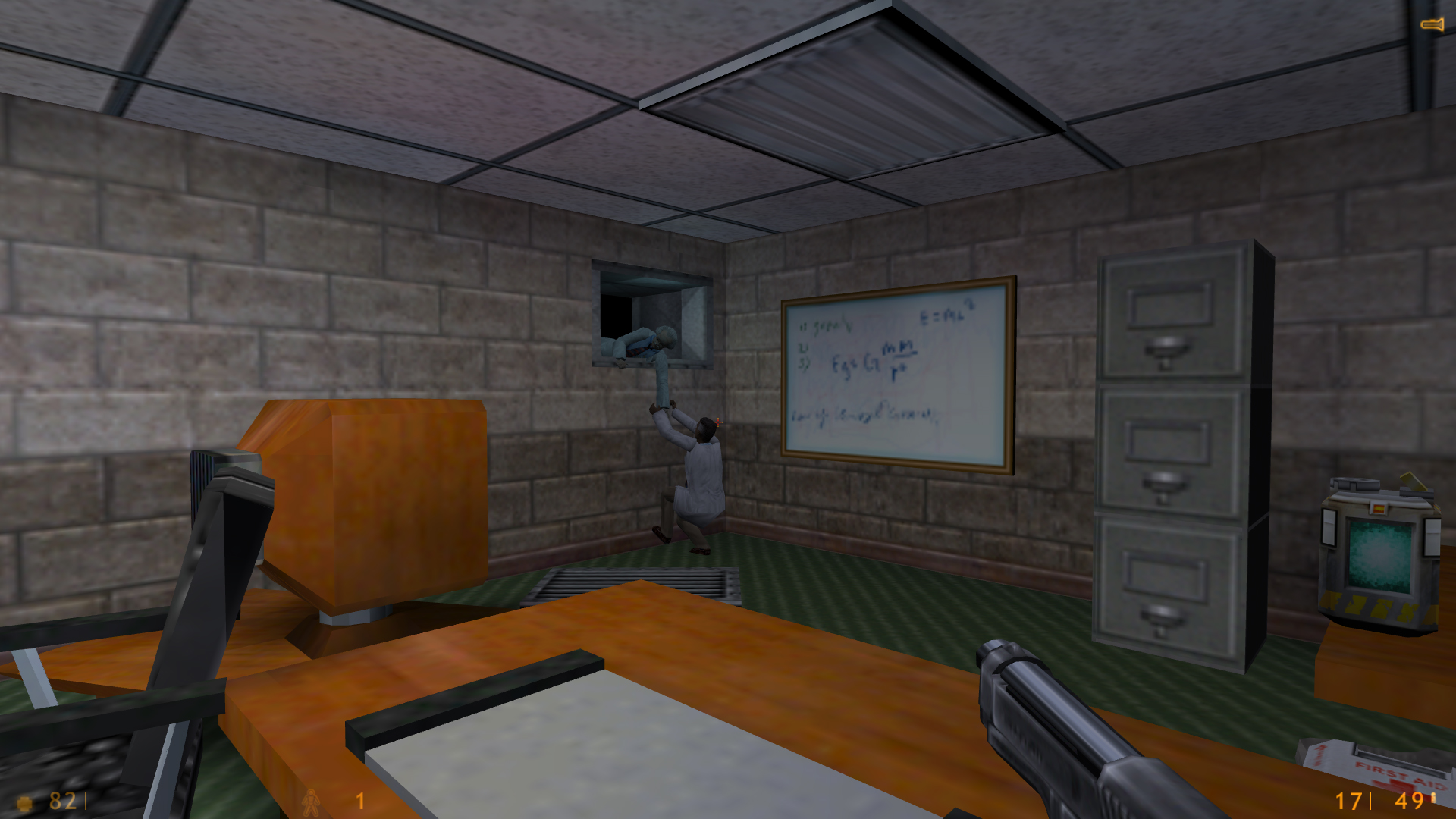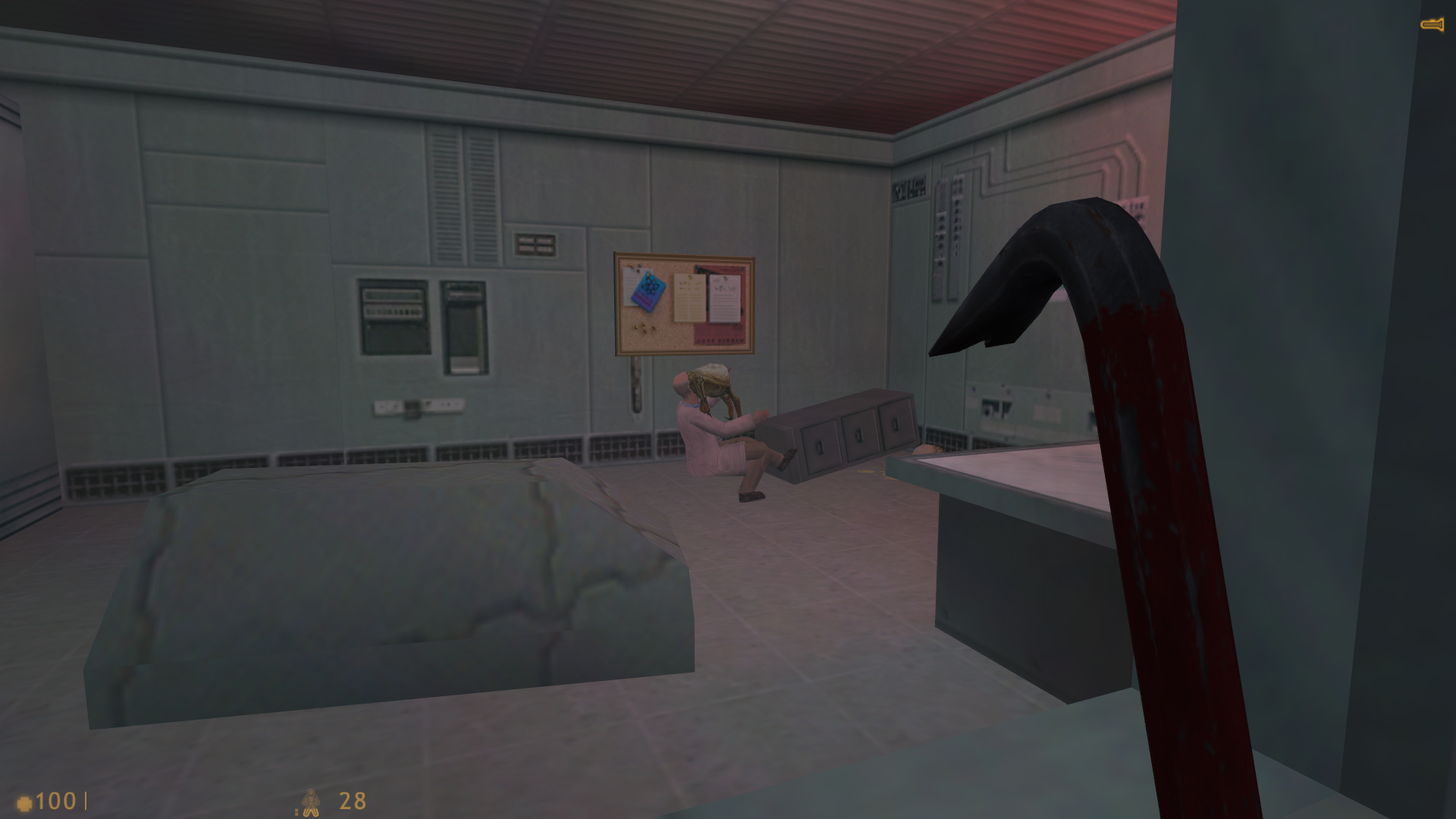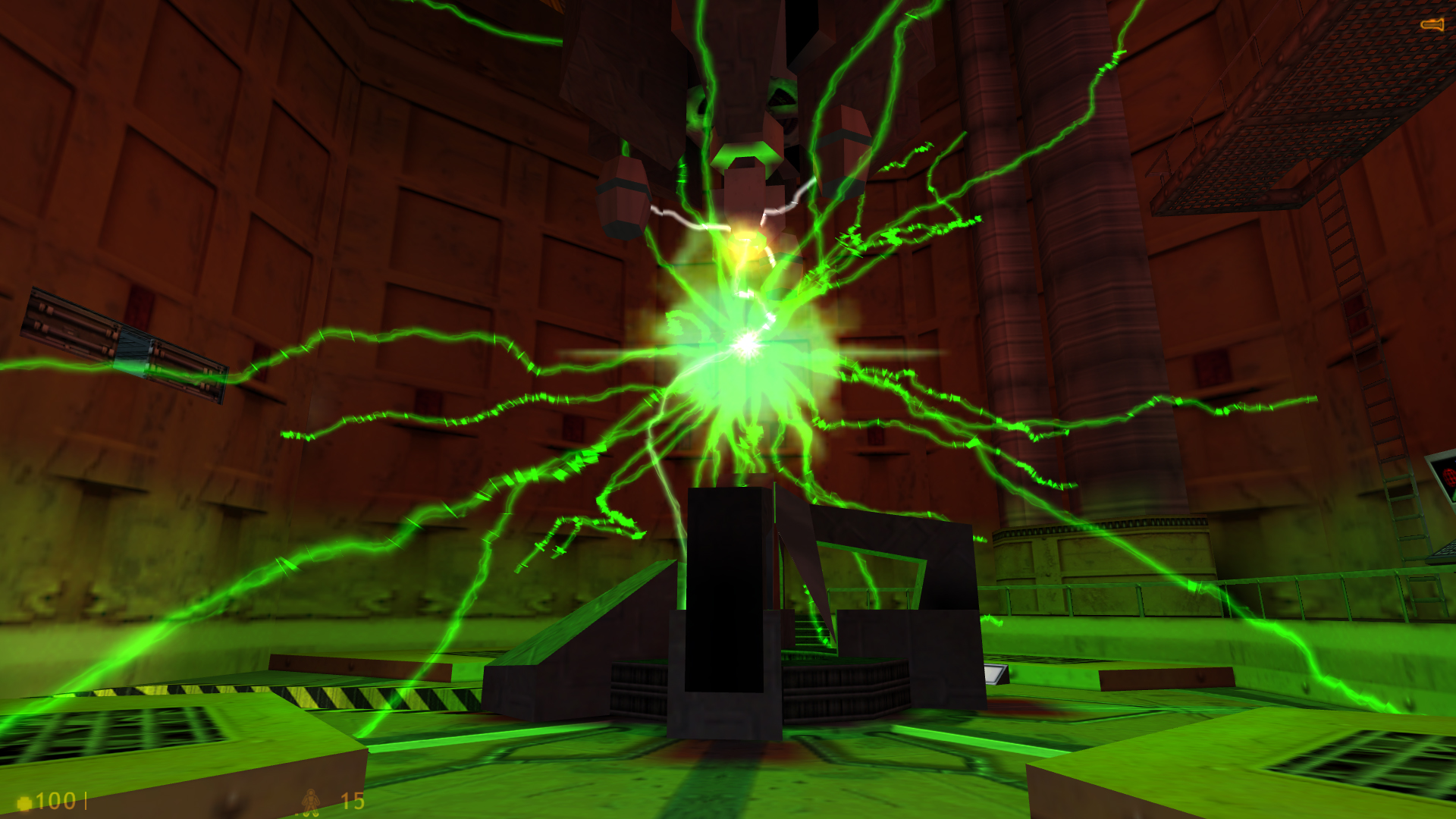Years later, Half-Life’s influence is still being felt
The shooter that redefined a genre.

When I speak with Vincent Adinolfi, indie designer of a low-poly 3D survival horror game called Heartworm, he brings up influences like Silent Hill, Resident Evil, and even Dino Crisis. That's to be expected. But then he mentions Valve’s classic 1998 FPS. “I’ve tried to take cues from games like Half-Life in the way that Valve uses environment design to naturally develop the narrative,” he says.
It’s not the first time I’ve heard developers namecheck Half-Life while making games very different to it. Its effect on the way games tell stories transcends genres. Which is surprising given how few other 1990s shooters even had stories.
John Carmack of id famously said stories are as irrelevant to games as they are to porn, which explains Quake. Sure, adventure games and RPGs might need plots, but what does an FPS have to gain? When Half-Life proved even a game about shooting zombies could be improved with a memorable story, it made the point for everyone. And it did it without cutscenes or a single paragraph of text. Mainly, it did it through Black Mesa.
Intensive scares
Half-Life’s writer Marc Laidlaw once explained on his blog that Half-Life was initially planned to be a nonlinear game. That all changed because, as he put it, “All narrative forms of drama, but especially horror, rely on pacing and rhythm. In horror timing is crucial. You have to set up your traps just so, and wait until your victim is precisely in position.”
While previous shooters had elements of horror—Doom had a chainsaw and shotgun because id were fans of Evil Dead 2—the games were never horror themselves. They were action in Halloween clothes.
The first third of Half-Life is, as Laidlaw says, explicitly horror. There’s the slow burn, where we’re introduced to the characters at their most mundane, though with teasing hints of what may be about to go wrong. Then we see their ordinary world turned upside down, made dark and broken. Just like Alien, or Night of the Living Dead, or It.
Half-Life’s flashlight and its recharging battery are essential to its scares. You crawl through a vent, throwing that pool of light ahead of you, knowing it could run out before you reach the nearest exit. You turn it off to recharge for a moment, flick it back on, and light up a rearing headcrab’s underside.
The biggest gaming news, reviews and hardware deals
Keep up to date with the most important stories and the best deals, as picked by the PC Gamer team.
While several shooters after Half-Life copied its blend of horror and action, like the FEAR series (which also successfully imitated Half-Life’s squad AI), its influence was most felt in the first-person horror genre. Every game that gives you light as a limited resource, from Amnesia to Outlast, has that tiny bit of Half-Life in its DNA.
Dead good

When Laidlaw brought up horror he wasn’t just talking about darkness and monsters. He was talking about setpieces. The security guard with a zombie shambling up behind him, or the scientist trying to perform CPR on a fallen coworker. In Doom you find dead marines next to some spare ammo—in Half-Life you see their deaths and it hits you harder.
Ian Vogel, the level designer responsible for the Med/Sci level in System Shock 2, has said these “emotional anchors and prods” were a big inspiration for him. In System Shock 2 you’re on a research spaceship that’s been invaded, a scientific facility that’s in a similar state of emergency. You see a lot of people in lab coats being dismembered on the other side of bulletproof glass, a trick Dead Space would also notably repeat.

This formula—environmental storytelling spread across an impressive but collapsing testament to man’s hubris—would see its ultimate manifestation in BioShock. Every game that uses deaths on the other side of doors, or bodies carefully arranged on toilets or in beds to tell a little story that you arrived too late to see, owes a significant debt to Half-Life.
To ensure you catch these moments, Half-Life guides you with trails of blood, screams and lights. It hints at puzzle solutions the same way. A vent will have a convenient light shining out of it so you know where to go, a switch gives off sparks to suggest it’s connected to the sparking wire hanging in the water, a jumping sea-monster makes you look up at a shark cage, bubbles suggest life-saving breathing spots.
These techniques for pulling your eyes would be further refined in Half-Life 2, where a flying ship might draw your attention up to note a climbable spot, or a green light shine on an exit. From there they propagated, and everything from Call of Duty to Mirror’s Edge signposts paths with Half-Life’s tricks.
Mod nation

That’s all on the single-player side, but Half-Life’s influence goes beyond that. Its multiplayer mod scene was as big as Doom’s, and gave us Natural Selection, Cry of Fear, and Sven Co-Op, all of which went on to become standalone games. The team behind Age of Chivalry, a total conversion which replaced guns with swords, formed Torn Banner Studios and turned their mod into Chivalry: Medieval Warfare—now getting a sequel this year.
Rights to the World War II mod Day of Defeat were bought by Valve and it too became standalone, while the modders who made the original Team Fortress for Quake were hired to develop Team Fortress Classic as a Half-Life mod to show off its multiplayer potential. Then they made Team Fortress 2. Without that there would be no Overwatch, and no hero shooter genre.
And of course there’s the elephant in the room: Counter-Strike. Its creators, Minh ‘Gooseman’ Le and Jess Cliffe, were also hired by Valve and Counter-Strike became a series with its own esports league and an economy that puts small nations to shame. Without Counter-Strike, round-based modes where players work together in two squads to complete objectives doesn’t become the default first-person shooter multiplayer mode, another game has to be the first to go in hard on recoil modelling, and 950,000 people have to find a new game to play.
This isn’t the end of the story. Because while Half-Life’s influence is obvious once you start to look for it, its broader effect is invisible. It’s there when Vincent Adinolfi, making his survival horror game—and every other designer tying narrative to level design—remembers how Half-Life handled environmental storytelling. Whenever someone thinks plot is more important in videogames than it is in porn, whenever they think that just because a game has guns doesn’t mean it can’t have a narrative, Half-Life is there.

Jody's first computer was a Commodore 64, so he remembers having to use a code wheel to play Pool of Radiance. A former music journalist who interviewed everyone from Giorgio Moroder to Trent Reznor, Jody also co-hosted Australia's first radio show about videogames, Zed Games. He's written for Rock Paper Shotgun, The Big Issue, GamesRadar, Zam, Glixel, Five Out of Ten Magazine, and Playboy.com, whose cheques with the bunny logo made for fun conversations at the bank. Jody's first article for PC Gamer was about the audio of Alien Isolation, published in 2015, and since then he's written about why Silent Hill belongs on PC, why Recettear: An Item Shop's Tale is the best fantasy shopkeeper tycoon game, and how weird Lost Ark can get. Jody edited PC Gamer Indie from 2017 to 2018, and he eventually lived up to his promise to play every Warhammer videogame.

